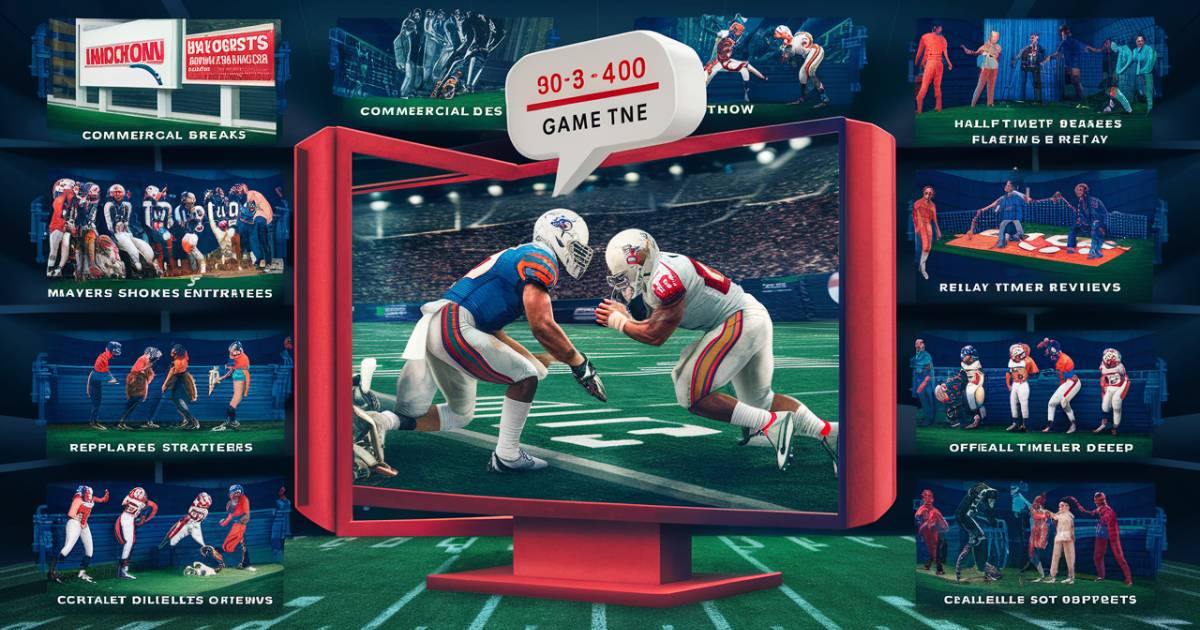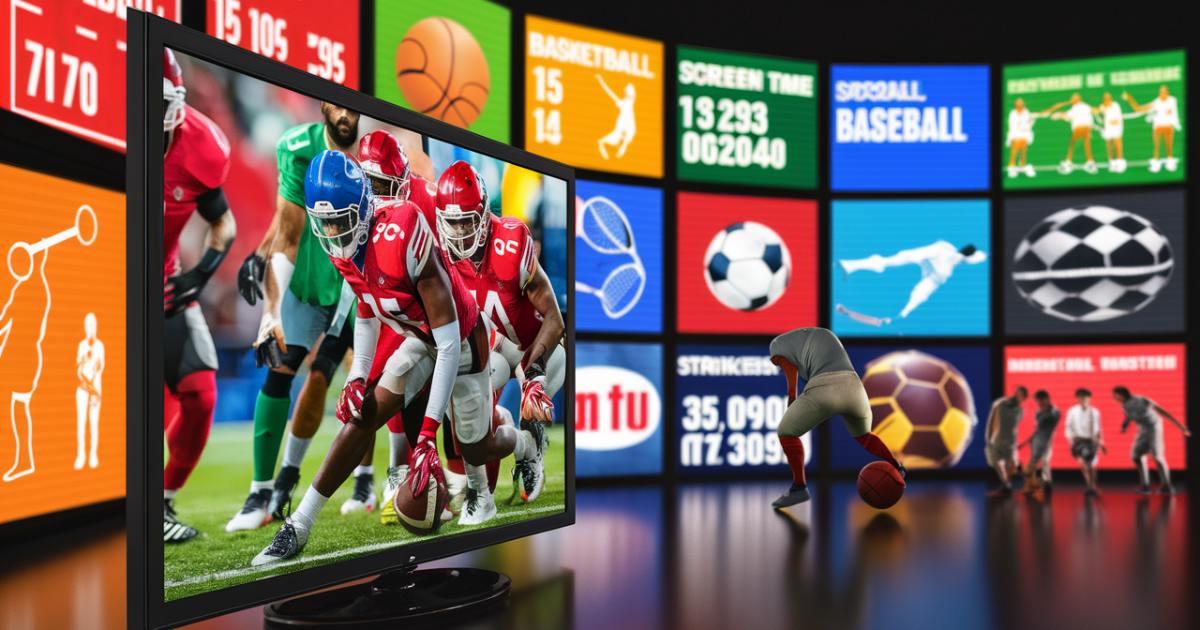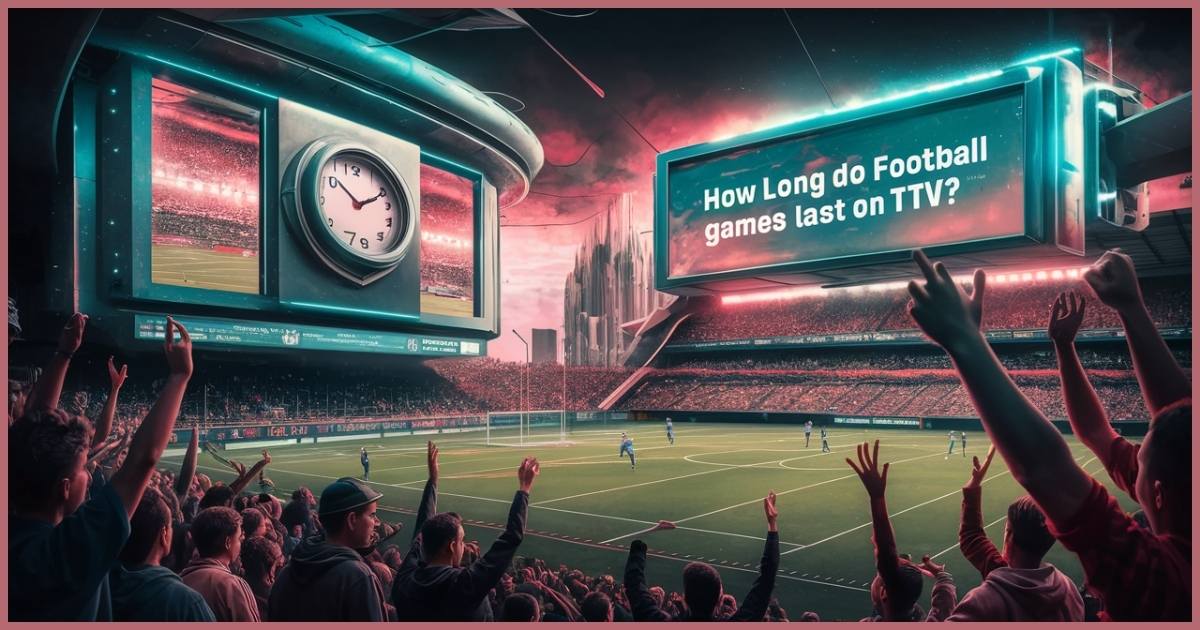Watching a football game on TV often feels like it takes forever. Football games on TV usually last about three hours, even though the game clock only shows 60 minutes. This difference happens because of various factors like commercials and breaks. We’ll explore why TV broadcasts are longer than the actual playtime.
You sit down to watch a game, expecting it to be over quickly. But before you know it, the afternoon is gone! The game seems to drag on with all the breaks, replays, and commercials. It’s a familiar story for football fans, making you wonder why the time stretches so much.
Football games on TV can last around three hours, much longer than the 60 minutes on the clock. This extra time comes from things like commercial breaks, timeouts, and halftime shows. In this guide, we’ll break down each part of the game that adds to the total viewing time. Knowing this can help you plan better and enjoy the full football experience.
Understanding the Duration of Football Games
When you watch a football game on TV, you might think it’ll last 60 minutes like the game clock shows. But actually, an NFL game broadcast usually takes about 3 hours and 12 minutes. That’s way longer than what’s on the scoreboard! This big difference between game clock time and real time happens because of many reasons we’ll look at.
Here’s something surprising: in a 3-hour football broadcast, the ball is only in play for about 11 minutes. That’s right – all the exciting action adds up to less than 15 minutes of real gameplay. The rest of the time is filled with ads, replay checks, timeouts, and other stops that are part of watching the game on TV.
Factors Affecting Football Game Length on TV

Football games on TV last longer than the actual playing time because of several factors. These things make the broadcast stretch out, turning a 60-minute game into a 3-hour show. Let’s look at the main reasons why this happens:
- Commercial breaks: These are the biggest time-adders. They happen after scores, during timeouts, and between quarters.
- Timeouts: Each team gets three timeouts per half, lasting up to two minutes each.
- Halftime show: Usually about 12 minutes long, but can be longer for big games like the Super Bowl.
- Replay reviews: When officials check plays on video, it can add several minutes to the game.
- Injury stoppages: When players get hurt, the clock stops until they’re taken care of.
- Official timeouts: These include things like the two-minute warning at the end of each half.
- Challenges: When coaches question a call, it leads to more replay reviews and delays.
Typical Length of NFL, College and High School Games
NFL games are usually the longest, taking about 3 hours and 12 minutes on TV. This can change based on how the game goes, how many stops there are, and if there’s extra time. Big games like playoffs and the Super Bowl often last even longer because of longer halftime shows and more ads. The Super Bowl can go on for over 4 hours!
College football games are a bit longer than NFL games, lasting about 3 hours and 24 minutes. This is because of different rules for the clock and things like marching bands playing. High school football games are shorter, usually 2 to 2.5 hours. They’re quicker because there are fewer ads and the quarters are shorter, often 12 minutes instead of 15.
How Timeouts and Interruptions Impact Game Duration
Timeouts play a big role in making football games longer on TV. Each team gets three timeouts per half, lasting up to two minutes each. Teams use these to stop the clock, plan their next move, or ask for a replay check. But it’s not just team timeouts that add time. Official timeouts for things like player injuries or measuring yard gains also make the game longer.
The two-minute warning near the end of each half isn’t just for the teams – it’s also a chance for more TV ads. Penalties slow down the game too, as the referee needs time to explain what happened and move the ball. Sometimes, bad weather can even make a game stop for a while or continue on another day. All these things add up to make the TV broadcast much longer than the 60 minutes on the game clock.
The Role of Commercials in Prolonging Broadcast Time
TV football games have lots of commercials. In fact, a typical NFL game shows about 100 ads, which take up almost an hour of the total time you watch. These ads are shown at specific times, like after someone scores, during breaks, and between game quarters. Some fans don’t like these interruptions, but they help pay for the game broadcasts.
TV networks are careful about when they show ads. They work with the NFL to make sure ads don’t pop up during important game moments. Sometimes, they even pause the game just to show ads. These are called “commercial timeouts.” If you don’t like ads, you can watch channels like NFL RedZone, which shows mostly just the exciting parts of many games with fewer commercials.
Comparing Football with Other Sports: Screen Time Analysis

Different sports take different amounts of time to watch on TV. Let’s compare how long football games last compared to other popular sports. This can help you plan your viewing time better. Here’s a simple table showing the average time it takes to watch a full game of various sports on TV:
| Sport | Average Broadcast Duration |
| NFL Football | 3 hours 12 minutes |
| MLB Baseball | 3 hours |
| NBA Basketball | 2 hours 30 minutes |
| Soccer | 2 hours |
| NHL Hockey | 2 hours 20 minutes |
As you can see, NFL football games usually take the longest to watch. Baseball comes close, while sports like soccer take less time. Remember, these are average times and actual broadcasts might be shorter or longer depending on how the game goes.
Game Length Trends: Are Football Games Getting Longer?
Over time, NFL games have gotten longer. In the 1970s, games lasted about 2 hours and 55 minutes. Now, they’re around 3 hours and 12 minutes. This is because of more complex plays, more instant replays, and more commercials. The NFL knows games are getting longer and has tried to speed them up by making replay reviews shorter and having fewer commercial breaks.
The NFL wants to make games shorter, but they also want to make money from ads. Some fans like longer games because they get more entertainment. Others think long games are boring. The NFL is trying to find a balance between keeping games exciting and making money. We don’t know yet if games will keep getting longer or if they’ll get shorter in the future.
Read More:
How Many Football Fields in 10 Acres? Unveiling the Surprising Ratio
Final Thoughts
Understanding how long football games last on TV helps you plan your viewing time better. While the game clock shows 60 minutes, the actual broadcast usually lasts about 3 hours and 12 minutes. This extra time comes from commercials, timeouts, halftime, and replay reviews. Knowing this can help you set aside enough time to enjoy the whole game without surprises.
If you want to watch more action and less waiting, you might try recording the game and skipping through breaks. You could also use this extra time to chat with friends, grab snacks, or check stats.
No matter how you choose to watch, understanding the real length of TV football games can make your viewing experience more enjoyable and less frustrating. By being prepared for the full broadcast duration, you can settle in and fully enjoy the excitement of the game from kickoff to the final whistle.

I am a web content writer with 4 years of experience. I share insights and expertise on various topics through my personal blog, “haadizone.com,” covering a wide range of global content.

